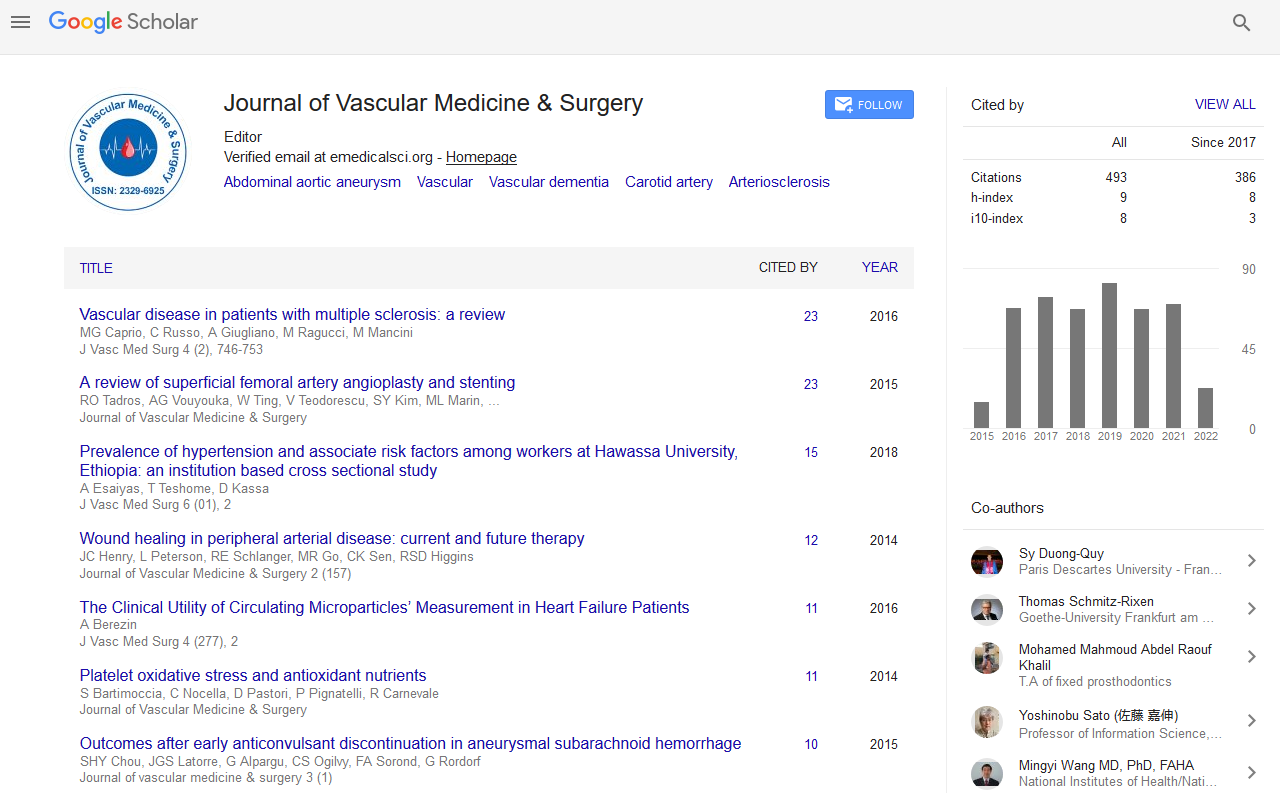Indexed In
- Open J Gate
- Academic Keys
- RefSeek
- Hamdard University
- EBSCO A-Z
- OCLC- WorldCat
- Publons
- Euro Pub
- Google Scholar
Useful Links
Share This Page
Journal Flyer

Open Access Journals
- Agri and Aquaculture
- Biochemistry
- Bioinformatics & Systems Biology
- Business & Management
- Chemistry
- Clinical Sciences
- Engineering
- Food & Nutrition
- General Science
- Genetics & Molecular Biology
- Immunology & Microbiology
- Medical Sciences
- Neuroscience & Psychology
- Nursing & Health Care
- Pharmaceutical Sciences
Abstract
Surgical Palliative Drainage in Un-resectable Malignant Biliary Obstruction
Sanei B, Kolahdouzan M, Sheikhbahaei S, Janbazi L, Shahabi S and Rezaei MA
Introduction: Tumor resection is the curative therapy in the patients with malignant obstruction and in nonoperable patients non-surgical palliative therapy, is recommended. These methods may not be successful in some cases because of the various reasons, so the surgical intervention is needed to eliminate biliary obstruction. The aim of this study is to introduce and evaluate a new method for drainage in the patients with un-resectable malignant obstruction in biliary system. Method: This study included 21 patients with un-resectable tumor of biliary tract causing obstruction. After exploring the abdomen, segment II and III of liver will be dissected and then a part of segment III will be removed. In all of cases feeding tube will be put in the duct. Two to three biliary ducts will be specified; thus, feeding tube at least number 5 will be inserted inside the duct and guided through the liver so that it reaches the large ducts inside. A Roux arch will be created afterwards, and will be anastomosed to the liver capsule in parachute procedure. After operation patients will be monitored for the outbreak of cholangitis, anastomosis leakage, pruritus and the decrease of bilirubin level. Results: The new method of surgery in patients with malignant obstruction of the biliary tract was exclusively palliative in all 21 cases. The 30-day mortality in the study group was 14.3% (n=3/21). Pruritus was comparatively cured in the patients (85.7%), and prevalence of cholangitis was decreased after the intervention (19% to 14.3%). Anastomosis was leaked in just one patient. Conclusion: In patients with amalignant obstruction in biliary tract in hilum of liver which non-surgical procedures were not successful, so hepatojejunostomy might be more effective.


